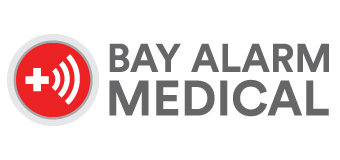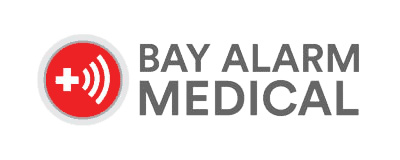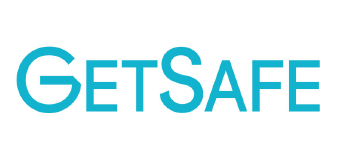MedicalAlertBuyersGuide.org is an independent review site. We may earn compensation from the providers below. Learn More
The Best Medical Alert Systems of 2024
Find the best life saving medical alert systems for mom and dad. Our team performed 12,000 hours of research on 16 leading medical alert brands. We followed that with over 520 hours of hands-on testing conducted by our team.
Medical alert systems offer peace of mind and security for seniors and their families. These devices act as a crucial connection for individuals who may need immediate medical assistance.
A medical alert system is designed to provide fast, accessible help to people facing urgent health issues. It typically combines wearable devices with a central monitoring service for quick responses.
Medical alert systems are particularly vital when falls occur. The first hour after a fall, often referred to as the “golden hour,” is critical. Studies show that 62% of fall victims who don’t receive help during this time may lose their ability to live independently. As noted by Adult-Gerontology Nurse Practitioner Jenny Sanford, “a good fall detection system may help saves lives.”
Beyond fall response, those with medical alert subscriptions often spend fewer days in the hospital and reduce overall healthcare costs. While the benefits of these systems are clear, the wide variety of available options can make choosing the right one challenging.
Whether you’re searching for budget-friendly options, advanced mobile features, or systems tailored for home use, our reviews will guide you to the best choice. Check out our video below where we hands-on show you the different types of medical alert systems: in-home, mobile, and watches so you can decide which one works best for you. You can also find our top recommended systems below. Take your time exploring!
How We Tested: Hands-On Testing + In-Depth Reviews
Our team dedicated 12,000 hours to researching 16 top medical alert brands to identify the best systems. After that, we spent more than 520 hours testing them firsthand. We purchased each system included in this review and carefully assessed every stage of the experience: from buying and setup to real-world scenarios, such as simulating falls.
We paid close attention to both the technical performance of the systems and the level of customer service provided by the companies. During consultations, we noted which brands offered honest assessments versus those focused on upselling. We also flagged companies with aggressive sales tactics and hard-to-manage return policies. While simulating falls, we evaluated how emergency operators responded and followed up with us.
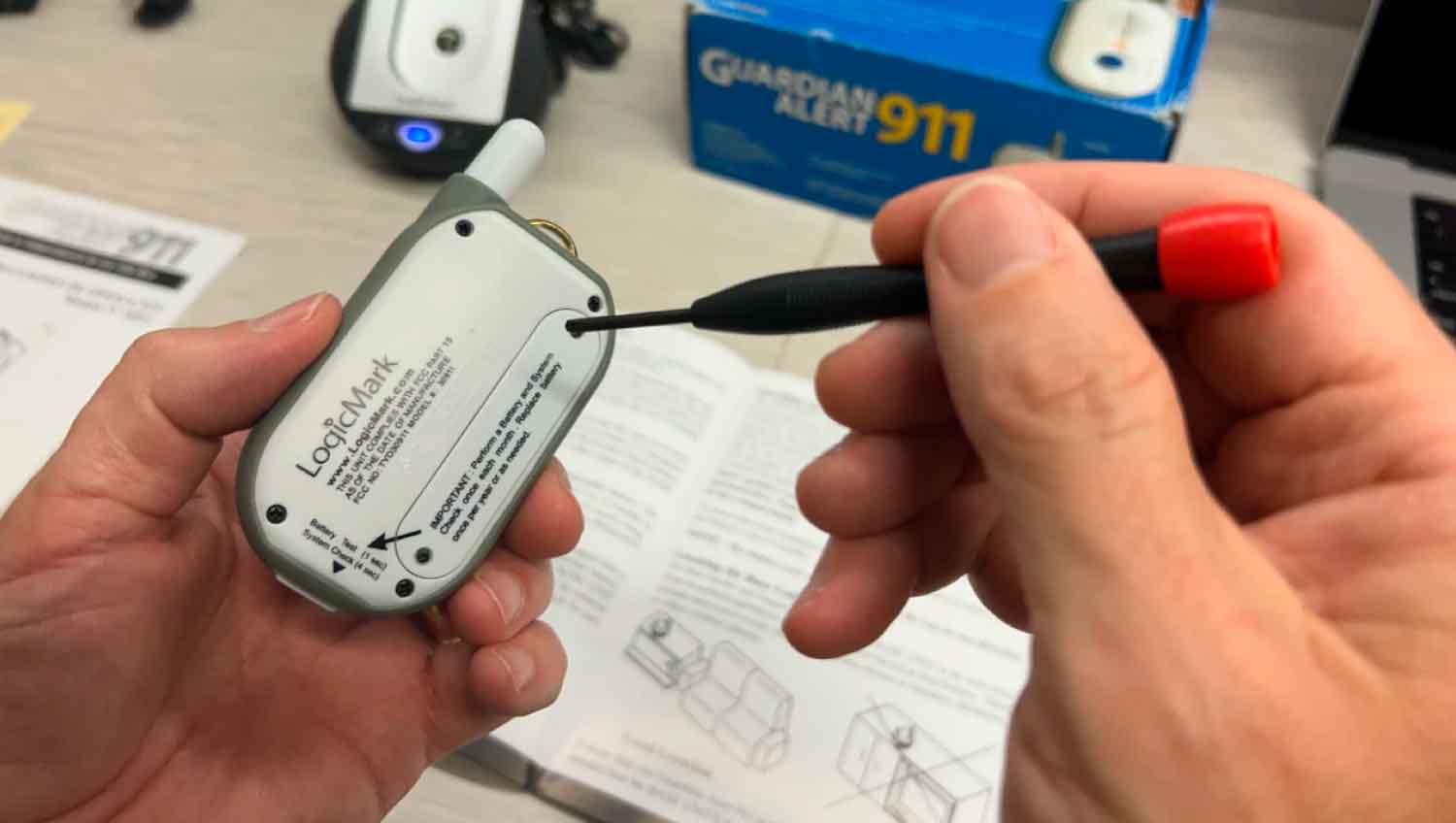
Best Medical Alert Systems Comparison Chart
| Monthly Rates | Activation Fees | Shipping Fees | Trial Period | See Plans | Read Review | |
|---|---|---|---|---|---|---|
| Bay Alarm Medical | $24.95/mo - $54.96/mo | None | $12 - Free for quarterly & annual subscriptions | 30 days | SHOP | Read Review |
| MedicalAlert.com | $27.95/mo - $47.95/mo | $99.95 | $24.95 - Free for semi-annual & annual subscriptions | None | SHOP | Read Review |
| Lifeline | $29.95/mo - $44.95/mo | $99.95 | $29.95 - Free for semi-annual & annual subscriptions | None | SHOP | Read Review |
| GetSafe | $29.95/mo - $39.95/mo | None | $0 - Free Shipping across all products | 30 days | SHOP | Read Review |
| ADT Medical Alert | $31.99/mo - $41.99/mo | $99 | $29.99 - Free for quarterly & annual subscriptions | None | SHOP | Read Review |
The Best Medical Alert Systems of 2024
- 1. Bay-Alarm-Medical - Best Customer Service & Pricing Plans
- 2. Medical-Alert - Best for Ease of Use & Setup
- 3. Lifeline - Best for Professional Installation
- 4. GetSafe - Best System for Inside the Home
- 5. ADT - Best for Brand Reputation
Medical Alert Systems Provider Overview
Bay Alarm Medical Overview
After hearing numerous glowing reviews about Bay Alarm Medical’s exceptional buying experience, we decided to give it a try ourselves—and the feedback didn’t disappoint. From the moment we reached out, our care representative was warm, knowledgeable, and eager to understand our specific needs. Initially, we were a bit hesitant about the process, but the representative’s genuine concern quickly put us at ease.
They took the time to thoroughly discuss everything, including symptoms and comfort preferences for our loved one, and only recommended what was necessary. Since seniors can have strong preferences when it comes to medical alert devices, it was great to see Bay Alarm Medical offer a variety of options—whether a discreet necklace or a bracelet. The sales team was genuinely helpful and never pressured us into making decisions. Their approach earned our trust right away. It was also reassuring that, even though we were willing to pay for extras, they made sure we double-checked that our parents were truly comfortable with any add-ons.
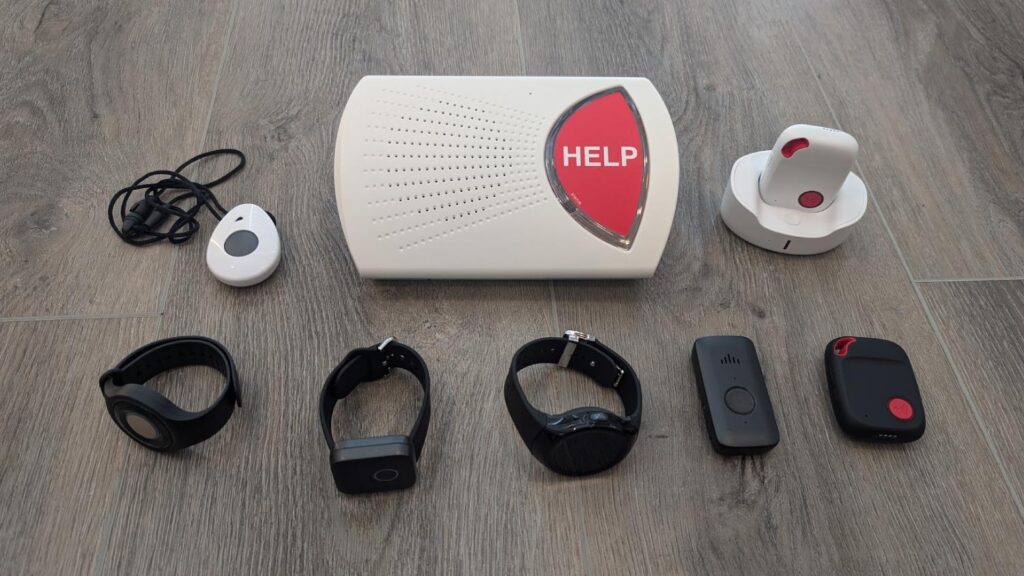
Our order arrived promptly within just a few days, and setting up the system was a breeze. The included Quick Start guide was easy to follow, even for those with limited vision. The response time was impressively fast. On average, during our testing, we connected with an operator in about 12 seconds—slightly faster than other systems we tried. Each time we pressed the button, the operator greeted us warmly, which helped us feel safe and reassured.
We tested all four of Bay Alarm Medical’s products, including the in-home system (both landline and cellular), SOS All-In-One, SOS Mobile, and the SOS Smartwatch. Every system worked flawlessly, and we were particularly pleased with the mobile GPS tracking feature, which provided accurate real-time locations. The fall detection feature was also reliable, with no false alarms over two days of testing.
Overall, we were thoroughly impressed with Bay Alarm Medical’s service. With affordable pricing and a wide range of options, they have easily become our top-rated medical alert system for 2024. To watch an unboxing video and see the product for yourself, check out this three-minute clip by an emergency room nurse who knows first hand how important medical alert systems are.
Medical Alert Overview
Medical Alert by Connect America is one of the leading providers of personal emergency response systems (PERS) in the country, serving both individuals and health systems. As a longstanding and trusted player in the field, they have helped shape the industry.
In the 1990s and early 2000s, companies like Life Alert and Lifeline dominated the market, often locking seniors into lengthy 3-year contracts. Connect America revolutionized the space by allowing clients to cancel their service at any time, a feature that has since become standard across top providers.
If you’re seeking a dependable and straightforward home system, Medical Alert is an excellent option. Their systems are user-friendly and easy to set up, with lightweight help buttons and long-lasting batteries. You can also add fall detection for an extra $10 per month, a highly recommended feature given that one in four Americans over 65 experience falls each year, with many leading to injuries requiring medical care.
Overall, Medical Alert is a well-established and reliable company. Additionally, they offer monitoring services beyond the U.S. borders, adding extra value for customers.
Lifeline Overview
Lifeline has earned a spot on our 2024 Best list with its user-friendly and dependable alert systems. For those seeking a well-known brand in healthcare and are open to paying a bit more, Lifeline’s medical alert devices are a solid choice.
Known for their simplicity in setup, maintenance, and emergency use, we also suggest adding Auto Fall Detection if your loved ones are at risk of falls or blackouts.
As a premium service backed by years of proven reliability, we confidently recommend Lifeline and are pleased to feature it among our top picks this year.
GetSafe Overview
With extensive experience in wireless home security, GetSafe is expanding its services by introducing medical alert systems to its lineup. From the start, it’s evident that GetSafe stands out in two key areas.
First is its unique system design. Do you have loved ones who resist wearing a medical alert button? GetSafe’s medical alert system operates without requiring any wearable device. The goal is to create a safety net throughout the home using wall-mounted buttons. This setup is ideal for individuals who only need assistance while at home, as the devices do not function outside the house. In addition to providing practical safety, the hardware is sleek and easy to install, offering a user-friendly experience without an obvious “emergency” look.
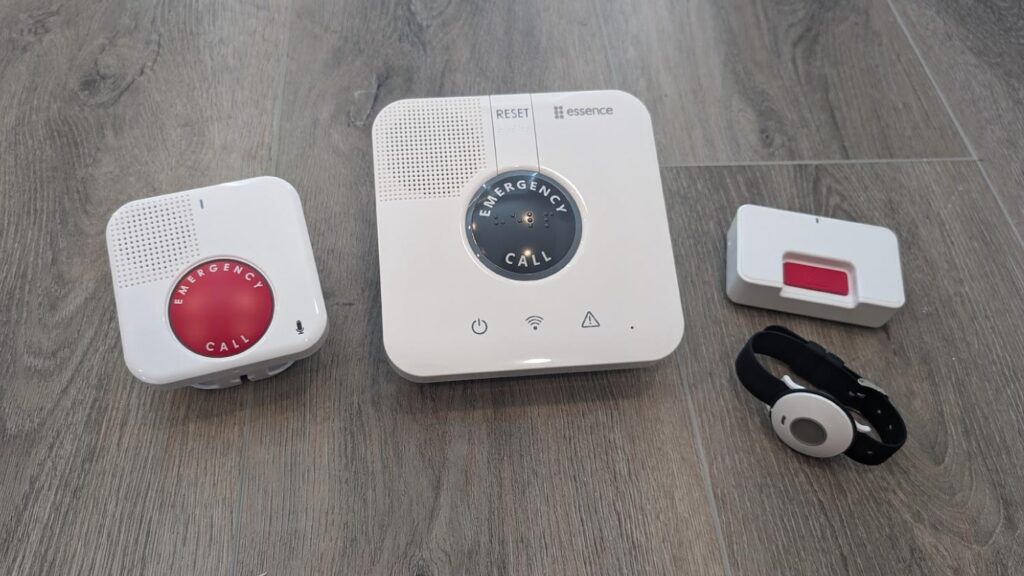 The second differentiator is GetSafe’s pricing approach. Most medical alert providers increase monthly fees as more devices are added. GetSafe, however, keeps monitoring costs fixed at $27.95 per month, with customers purchasing additional devices upfront. The company offers three straightforward packages based on home size, making it easy to understand how much coverage you need.
The second differentiator is GetSafe’s pricing approach. Most medical alert providers increase monthly fees as more devices are added. GetSafe, however, keeps monitoring costs fixed at $27.95 per month, with customers purchasing additional devices upfront. The company offers three straightforward packages based on home size, making it easy to understand how much coverage you need.
GetSafe has successfully developed a system that allows users to access 24/7 help without the inconvenience of wearing a button. We applaud their effort in creating a stylish, unobtrusive, and seamless medical alert solution.
ADT Health Overview
ADT’s Medical Alert systems provide 24/7 monitoring and emergency assistance for seniors or individuals with medical conditions who might need help during a fall or other health emergencies. Users wear a device, such as a pendant or wristband, with a button that directly connects them to ADT’s monitoring center when pressed.
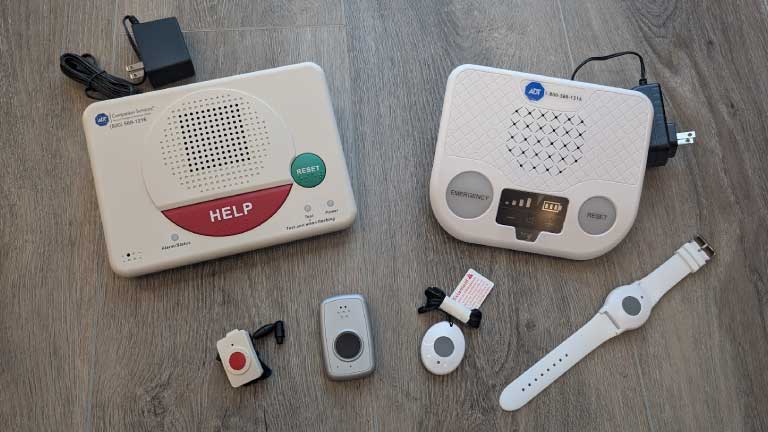
Among the top five systems we evaluated, ADT’s equipment was the least impressive. The in-home unit had a noticeable yellowish tint, and the mobile device felt cheaply made with its plasticky appearance. Despite this, ADT remains a trusted name when it comes to monitoring services. The monitoring center assesses the situation and dispatches emergency aid if necessary. The systems also come with additional features such as fall detection and GPS tracking for added security.
ADT offers a variety of subscription plans tailored to different needs and budgets, allowing users to choose a package that fits their preferences.
Find the Best System for Your Needs
In-Home vs mobile? Landline vs cellular? Wearable buttons vs wall buttons? Automatic fall detection and GPS tracking? These are just some of the options you have when choosing the right medical alert system. This page is dedicated to choosing the best overall brand but this website also has guides if you wish to dig a little deeper. Check them out:
- Best Medical Alert Systems with Landlines
- Best Mobile Medical Alert Systems
- Best Medical Alert Smartwatches
- Best No Fee Medical Alert Systems
- Best All-In-One Medical Alert Systems (coming soon)
Budgeting for Your Medical Alert System
Ideally, we’d all choose a medical alert system that offers all the bells and whistles regardless of how much it costs. However, we live in a world where approximately 40% of older Americans rely solely on their Social Security to get by.
We understand there isn’t much wiggle room when families are on fixed incomes so the more realistic approach is to set a budget and decide what features are most important. We’ve done a cost analysis to help you with these decisions.
Monitoring Costs
By far the most important factor when it comes to signing up for a medical alert system is the professionally monitored 24/7 live agent and call center that’s on the other end of the line. This is the backbone of the service and the bulk of what you’re paying for.
Monitoring subscription fees range from $25 per month for in-home systems to $40-$50 per month for a mobile medical alert device. The reason why mobile subscription fees cost more is similar to why your smartphone is more expensive than a landline; companies have to charge extra for cellular and gps tracking capabilities.
Most families often want to add Automatic Fall Detection features to their service which is usually adds $10 per month to the service. Our top brands will be able to work within your budget to find a pricing solution that best fits your needs.
Equipment Costs
Most In-Home Medical Alert Systems don’t require an upfront a device fee. These “boxes” often referred to as “base consoles” or “main units” spend their lives atop a counter, night stand, or living room coffee table. These units are provided free of charge upon sign up and are required to be sent back to the provider upon service cancellation.
However the buttons that are worn with these systems will sometimes need to be replaced once every few years depending on usage. These wearable buttons have pretty long battery lives though and at around $20-$30 each, are fairly inexpensive to replace.
Alternatively, mobile devices will either require a hardware fee or an activation cost. These devices are purchased outright and don’t need to be returned when service is cancelled. Price ranges from $80-$200.
Again, think of it has purchasing a mobile phone. We’ll typically recommend buying an extended warranty plan from the provider since these devices are used throughout the day and go through a bit more wear and tear versus an in-home system.
Activation Costs
Some providers will charge an “activation fee” to make up for lost product revenue during sign up. In our reserach, we found that providers will either charge an equipment fee or an activation fee for new customers during sign up. We recommend choosing the equipment for the simple fact that you’re simply buying the device as opposed to paying a fee that doesn’t yield any material advantage.
Long Term Contracts
Avoid working with providers that require any type of long-term contract. Most medical alert providers give discounts and benefits when you pre-pay for a year but even then, you want to make sure that if you need to cancel early (due to death or the need to transfer to assisted living), you’re not on the hook for unused months.
Our top provider, Bay Alarm Medical, for example, prorates any unused months regardless of which payment plan the customer chooses.
So How Much Will I Be Spending?
From the surveys we’ve done, on average, customers that opt for an in-home system spend between $30-$40 per month. Customers that prefer a mobile cellular solution spend between $40-$50 per month plus and extra $80-$150 for whatever device they like.
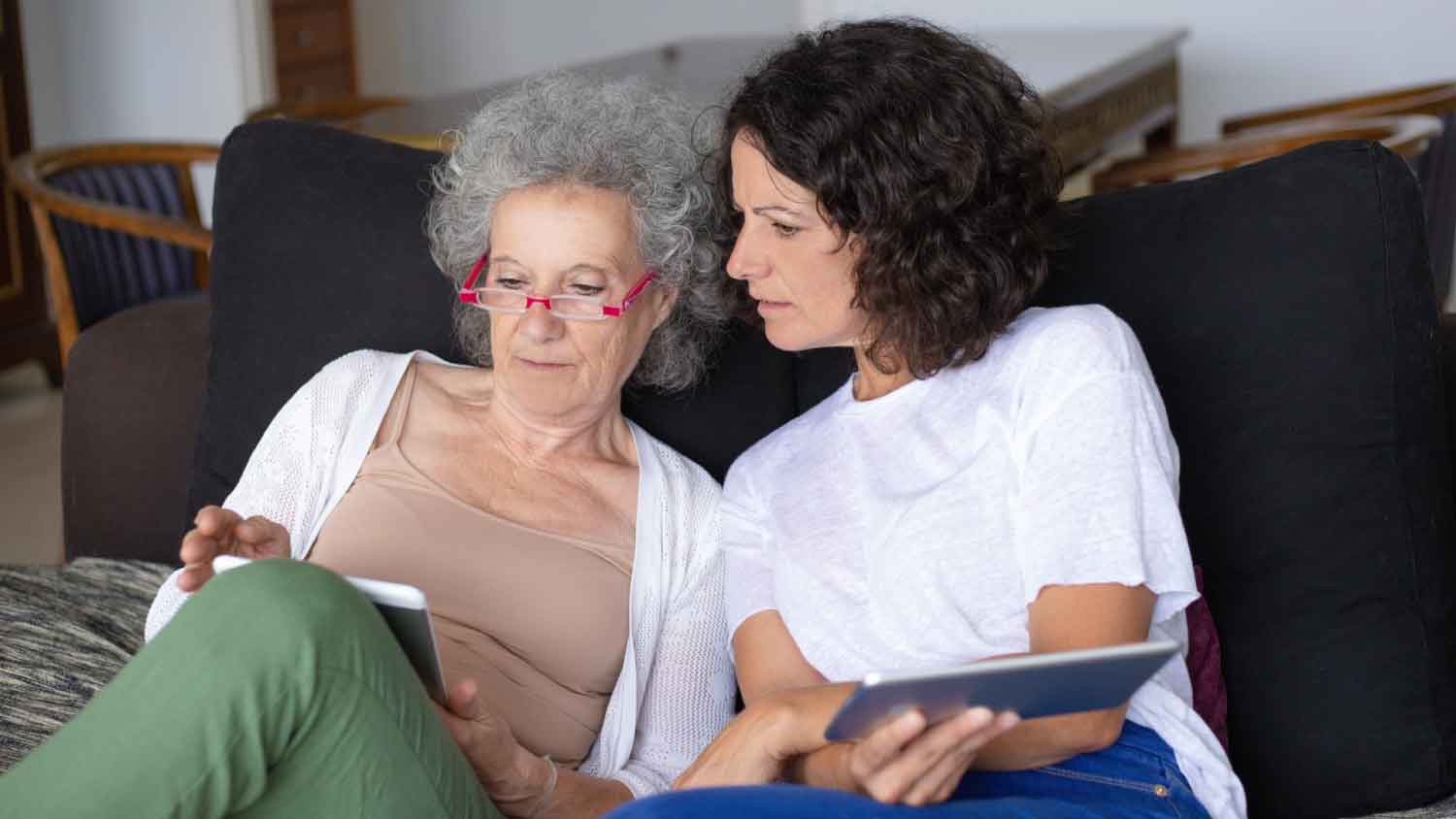
Here's How a Medical Alert System Works
A medical alert system is designed to provide quick and easy assistance to individuals who may need urgent medical attention. It works through a combination of wearable devices and a centralized monitoring system. Here’s a simple breakdown of how it operates:

1. Press the Button on Your Device
A medical alert system includes a wearable device, such as a pendant or bracelet, with an emergency button. This button is easily accessible and can be pressed by the user in case of an emergency. It serves as a quick and convenient way to send a distress signal for help.
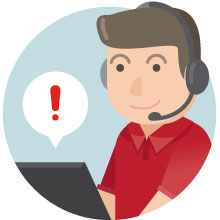
2. Professionally Trained 24/7 Agent Recieves Call
When the emergency button is pressed, a distress signal is transmitted to a monitoring center staffed by trained professionals who are available around the clock. They receive the signal and promptly assess the situation. The monitoring center serves as a centralized hub for emergency response, ensuring that help is just a call away at any time of the day or night.

3. Remain Calm and Wait for Help to Arrive
Once notified, appropriate medical professionals will arrive to assess the situation and take care of your needs. If they determine that you need to go to the hospital, they will transport you there fast. Rapid response, under an hour, is important because you’ll experience faster treatment and recovery time. Also, quickly addressing medical issues can reduce medical bills.
Life-Saving Medical Alert Add-Ons. Widen Your Safety Net!
When you select a medical alert provider, you’ll also need to decide on any additional accessories. This can mean requesting additional buttons for safety. Lock boxes and Vials of Life provide additional protection and are recommended by most providers.
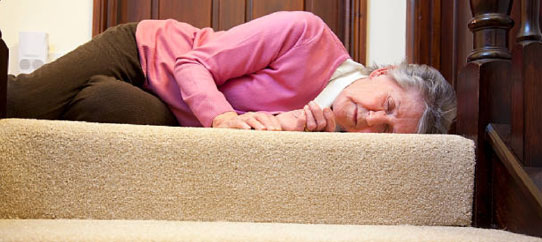
Automatic Fall Detection Buttons
Automatic fall detection is a key feature in medical alert systems for several important reasons.
First, it facilitates a fast response in emergencies by detecting falls and automatically alerting caregivers or emergency services. This swift action reduces the time it takes to get assistance, which is critical in ensuring early medical intervention and lowering the risk of complications from falls.
Second, it provides an extra layer of safety and reassurance. For elderly individuals or those with limited mobility, having this feature means they can feel secure knowing help will arrive even if they’re unable to trigger the alert themselves. This not only eases their anxiety but also supports a more independent lifestyle, while offering peace of mind to their loved ones and caregivers.
Lastly, automatic fall detection leads to better healthcare outcomes. The rapid detection of falls enables healthcare professionals to assess the person’s condition and provide timely care. Early intervention can prevent complications, shorten hospital stays, and speed up recovery. The data gathered can also help identify patterns and risks, allowing for preventive measures to be taken in the future.
In summary, automatic fall detection is an essential part of any medical alert system, ensuring quick responses, enhancing safety and independence, and improving overall health outcomes.
![]()
Mobile GPS Device Tracking
If you decide to purchase a mobile medical alert system, chances are it comes equipped with location tracking services. Wither the device has GPS, WiPS (Wi-Fi Position System) or both, the technology allows family members, friends, and your 24/7 monitoring center to pinpoint your location in case of an emergency. This requires you to carry the device when you go out.
This feature is can be beneficial for individuals with conditions such as Alzheimer’s or dementia, helping to prevent them from wandering off and getting disoriented. Additionally, geo-fencing services can alert a family member or friend if the individual leaves a designated safe area.
While not infallible, as the person must have the device with them, it can still provide valuable information about their last known location, aiding in locating them if they become lost.
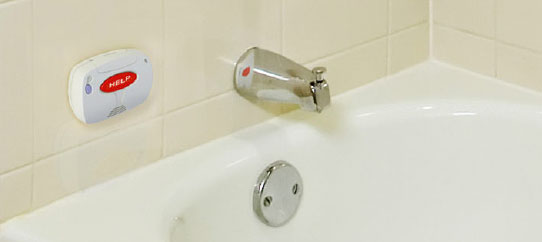
Wall Buttons are Useful
Wall buttons are a popular choice when it comes to medical alert accessories. They’re perfect for individuals who prefer not to wear a device or might forget to put one on. Many customers opt to equip their homes with 10 or more buttons for comprehensive coverage. These buttons can be conveniently placed throughout the home, with common spots being bathrooms, staircases, kitchens, and bedrooms. For optimal safety, they should be installed low enough to be reachable in the event of a fall.
Affordable and dependable, these buttons are easy to install—simply stick them where needed. Since they’re battery-powered, there’s no need for an outlet, offering flexibility in placement. With several buttons in the home, you increase overall security. Most models have a battery life that lasts five years or longer.
Look into the products at GetSafe Medical Alert Systems, particularly if you do not want to wear a medical alert button.
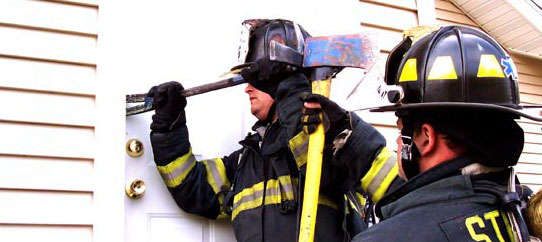
Importance of Lock Boxes
When someone activates their alert button, the primary goal is to send help as swiftly as possible. This usually involves reaching out to a family member or neighbor, but in critical situations, emergency responders like EMTs and firefighters may be needed for proper intervention.
In such scenarios, responders must gain access to your home quickly, as even a few seconds can be crucial. A lockbox with a spare key enables them to enter without damaging property. Without an accessible key, EMS might have to force entry through a door or window.
Most medical alert services provide lockbox options. They keep the combination code on file, so if emergency personnel arrive, the monitoring center can inform them of the lockbox’s location and code.
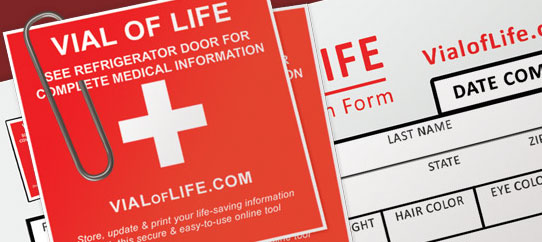
Vial of Life Helps You When You Can’t Speak
The Vial of Life accessory offers essential information to EMTs when you are unable to communicate. This packet, crucial in emergencies, contains all your medical details, aiding faster and more effective treatment if you’re taken to the hospital or emergency room.
Typically, it is attached to the refrigerator door. To set it up, you include information about your medications, allergies, and other health details. EMTs are trained to look for it, and the provider will also remind them to access it. You can also place these packets in other locations like your car, bedside table, or near a phone.
Most medical alert providers offer this service free of charge.
In-Home Systems vs. Mobile GPS-Enabled Devices
Depending on your mobility and lifestyle, you’ll want to know about the two types of medical alert systems available. It’s important to understand what they are before buying them. Here are a few pros and cons for each system.

In-Home Medical Alert Systems
Pros of In-Home Medical Alert Systems:
- Dependable Home Coverage: In-home medical alert systems are specifically designed for residential use. With a base unit connected to a landline or cellular network and a wearable emergency button device, these systems provide reliable coverage within your home, ensuring peace of mind and quick access to assistance when needed.
- Extended Battery Life: These systems often feature base units that remain plugged into a power source, offering continuous operation without frequent battery recharges. This guarantees that the system is always operational, eliminating concerns about battery depletion.
- Simple Setup and Operation: In-home medical alert systems are easy to install and use. They usually come with clear, user-friendly instructions and can be set up quickly without professional help. Once installed, using the system is straightforward—just wear the device and press the emergency button if needed.
Cons of In-Home Medical Alert Systems:
- Restricted Range: The coverage of in-home medical alert systems is typically limited to your home and its immediate vicinity. If you go beyond this range, such as for a walk or to run errands, the system’s effectiveness may be reduced.
- No GPS Tracking: Unlike mobile medical alert systems, in-home systems usually lack GPS tracking. This means if you need emergency help and can’t communicate your location, the system might not provide accurate information to responders.
- Reliance on Home Infrastructure: These systems depend on a stable landline or cellular connection. Issues like power outages or network disruptions can temporarily disable the system, compromising its reliability.
In-home medical alert systems offer dependable coverage within your home, long battery life, and ease of installation and use. However, they are limited in range, lack GPS tracking, and depend on your home’s infrastructure for connectivity.

Mobile Medical Alert Systems Including Smartwatches
Pros of Mobile Medical Alert Systems:
- Portability and Flexibility: Mobile medical alert systems, such as portable battery-powered devices and smartwatches, offer protection wherever you go. These systems use cellular technology, allowing you to stay connected and request help even when you’re away from home. Whether traveling, visiting friends, or running errands, mobile systems provide on-the-go peace of mind.
- GPS Location Tracking: Many mobile medical alert systems include GPS technology, enabling emergency responders or monitoring centers to accurately locate you in an emergency. This is particularly helpful if you have a medical condition that could cause confusion or disorientation.
- Wide Coverage Range: Mobile systems operate on cellular networks, offering coverage across a wide range of areas. As long as cellular service is available, you can access the emergency response features of your mobile medical alert system, no matter where you are.
Cons of Mobile Medical Alert Systems:
- Battery Life: Mobile medical alert systems depend on battery power. Depending on the device and usage, frequent recharging may be necessary. Ensuring the device is adequately charged is essential for maintaining its functionality when needed.
- Dependence on Cellular Reception: While mobile systems provide broad coverage, they rely on cellular reception. If you’re in an area with weak or no cellular signal, the system’s effectiveness may be compromised. It’s crucial to verify the coverage quality in your area before selecting a mobile medical alert system.
- Risk of Device Loss or Damage: The portability of mobile medical alert devices means there is a risk of loss or damage. Misplacing or damaging the device could hinder your ability to access emergency assistance when necessary. Taking precautions to keep the device secure and protected is important.
Mobile medical alert systems offer portability, GPS tracking, and wide coverage, enabling you to stay connected and request help even when away from home. However, they have potential drawbacks, including reliance on battery life and cellular reception, as well as the risk of device loss or damage. Additionally, they are generally more expensive and require an upfront device purchase.
Choosing Your Medical Alert
So there you have it – Five of the best medical alert providers that encompass the nation’s most popular choices for to make sure your loved ones get the quickest and most reliable assistance if and when help is needed.
This buyer’s guide was designed to help you narrow your options and select the most suitable system based on your income and unique living situation. Through mystery shopping, we acquired the top medical alert systems, set them up, and conducted thorough hands-on testing of both the equipment and its monitoring services.
Our assessment encompasses the complete customer experience, from the purchasing process with a sales representative to the evaluation of the company’s service quality after the purchase. Since most medical alert systems offer similar features, the quality of service—such as engaging with a helpful and friendly representative—often sets one company apart from another.
Many popular brands didn’t quite make our Top 5 list. For more information, scroll down to our Frequently Asked Questions portion below.
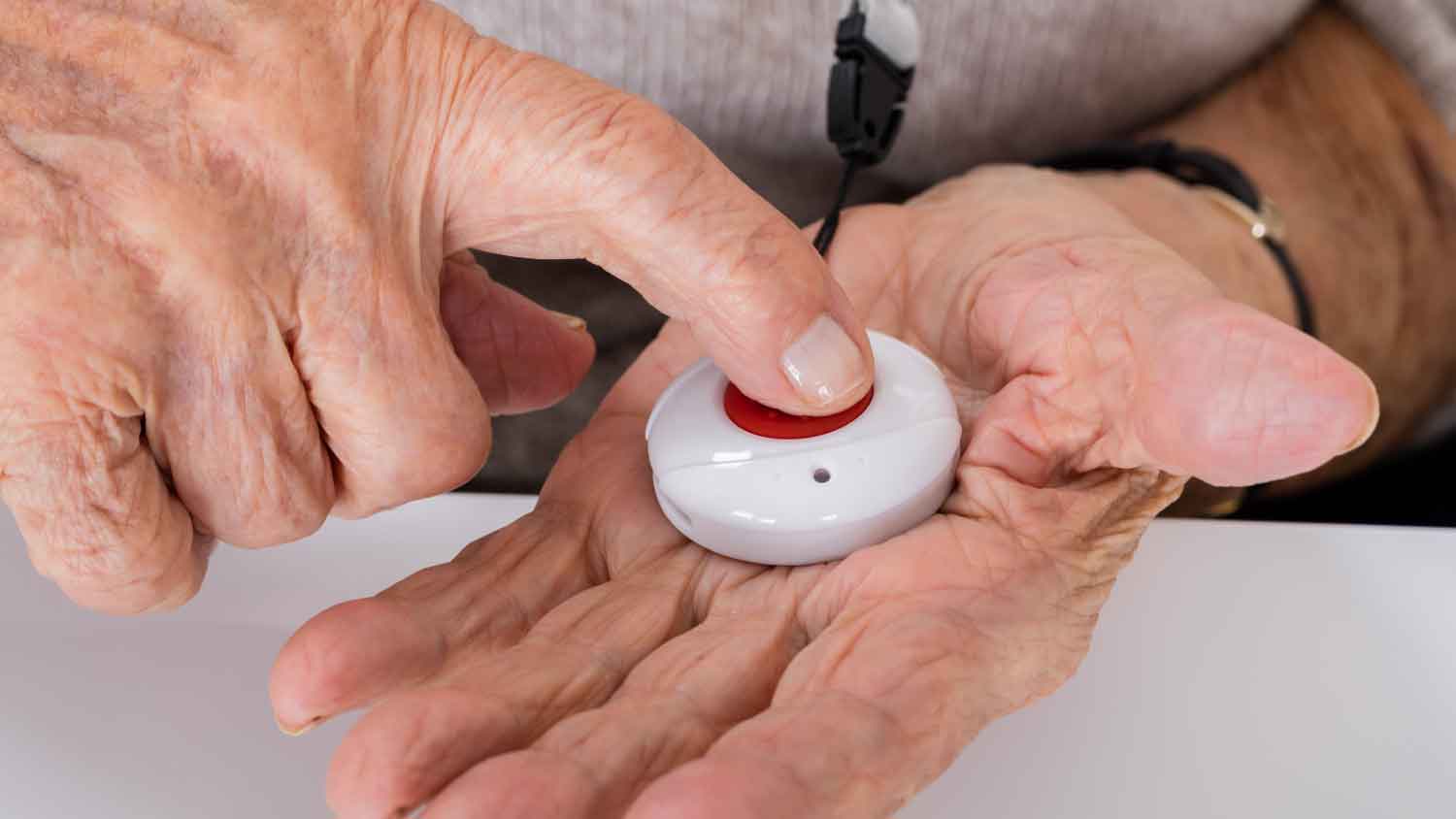
- https://www.ncbi.nlm.nih.gov/pmc/articles/PMC4499195/
- https://www.visn8.va.gov/VISN8/PatientSafetyCenter/research.asp
- https://visual.ly/community/Infographics/health/risks-costs-senior-fall-injuries
- https://www.cdc.gov/falls/data/falls-by-state.html
- https://tma.us/programs/fivediamond/
- https://www.cdc.gov/falls/facts.html
- https://www.ncbi.nlm.nih.gov/pmc/articles/PMC5699193/
- https://www.performancehealth.com/articles/the-impact-of-falls-on-the-elderly-infographic

